|
The 18-century-project, 2005
Ok, some people have called me crazy before, and I guess this project almost took the toll of me. But I wouldn't call myself crazy, as much as over-ambitious, as I started my biggest project as of yet... ;) I adore historical clothes – the cut, the beautiful fabrics and uncomfortable corsets... Now, wouldn't it be fun to make myself an 18-century dress? Wanting to know how it actually felt to be a lady and wear such a dress (figured I can't always be an owl, cat or the like ;)), I set out to do an in-depth study of middle- to late 18-century garments and pattern-construction. Then somehow I got to thinking – well, I *almost* have the time to finish this dress in time for New Year’s Eve. Why don't I also make Gustav III's french wedding costume for my boyfriend, and we can go back in time for one night, both of us? Well, of course I did. Working day and night the weeks before New Year’s Eve, I guess I'm still savouring the victory from actually being able to get this project finished in time... I've written som descriptions for the garments, but I probably won't bother to write any more detailed sewing-instructions than that. If you have some questions and would like to know more about this project though, I'll be happy to answer you at maja@pysslare.se. So... was it worth it? Ohyes, no question about it. Enjoy! :) Click on the thumbnails and they will open in a new window. |
|||||||||||||||||||||||
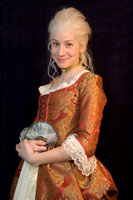 |
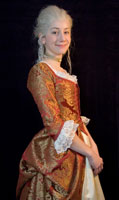 |
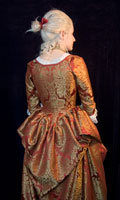 |
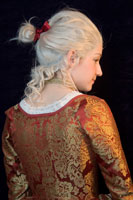 |
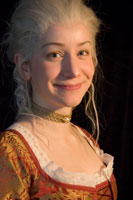 |
|||||||||||||||||||
| A polonaise with the back cut en fourreau I found this dress in a book called Patterns of Fashion 1, by Janet Arnold. It's an English polonaise dress from 1770. A bit tricky to construct the pattern, but otherwise it was a joy to make. I changed the front of the original dress' bodice which was closed with hooks & eyes, making a stomacher instead so that I could lace it up depending on how much I've laced up the stay (corset) underneath... ;) The petticoat consists of three layers. It's made of a gold-patterned, creme-coloured satin, over a layer of a type of felt which makes the petticoat both stiff and extra voluminous, and then an inner layer of cotton. I found a wonderful red and gold brocade for the polonaise. I adore the cut and draping of the back, when the light falls on the fabric it really makes it shimmer in reds and golds. Lots of pattern adaptations on this one, just look at the back – so much fun, hehe! |
|||||||||||||||||||||||
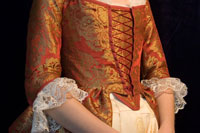 |
|||||||||||||||||||||||
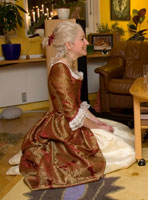 |
|||||||||||||||||||||||
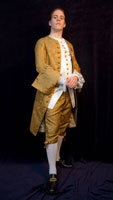 |
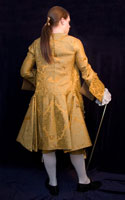 |
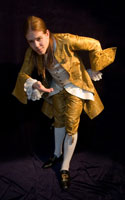 |
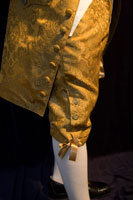 |
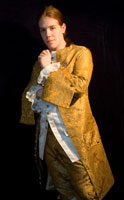 |
|||||||||||||||||||
| Gustav III's french wedding costume Now... Who could possibly turn this guy down? ;) In 1766, Gustav III got married in a fashionable and beautifully embroidered habit à la française, including breeches, waistcoat and justaucorps (coat). I used Livrustkammaren's pattern for the king's costume, except for the pants which I somehow managed to tailor my own way since the pattern I used were completely unintelligible. I found the same kind of fabric as in my dress, but in a deep yellow colour with shimmering golden brocade embroidery. Meters of strengthening vliselin was needed for the coat, as well as over 60 buttons of different types for the whole thing... |
|||||||||||||||||||||||
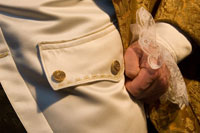 |
|||||||||||||||||||||||
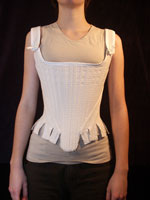 |
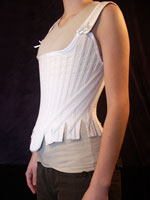 |
 |
This is the stay (corset) I wore under the dress. It's a model from about 1750-80, perfect for this occasion. It's made of double layers of fabric, with channels sewn for the bones, for which I used buntband(Swedish). The edging at the bottom is still left to do. | ||||||||||||||||||||
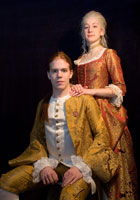 |
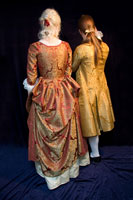 |
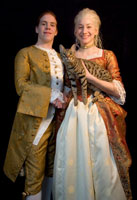 |
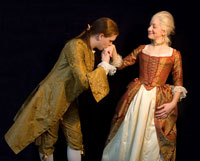 |
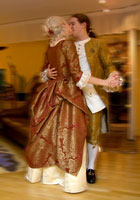 |
|||||||||||||||||||